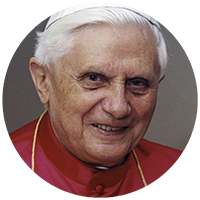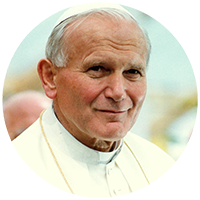Why popes change their name
Biblical Precedent: Name Changes Signify Divine Mission
In the Bible, name changes often mark a new mission or transformation:
• Simon to Peter: Jesus renamed Simon as Peter (meaning "rock") to signify his foundational role in the Church:
“You are Peter, and on this rock I will build my church.”
This name change is documented in Matthew 16:18.
• Saul to Paul: Contrary to popular belief, Saul's name wasn't changed upon his conversion. He was known by both names—Saul being his Hebrew name and Paul his Roman name. The shift in usage reflects his mission to the Gentiles.
These instances underscore the significance of a name change as a symbol of a new divine mission.
First Use: Pope John II (533 AD)
The first pope to officially change his name was Pope John II, born as Mercurius. He chose to adopt a Christian name upon his election to avoid the pagan connotations associated with his birth name, which was derived from the Roman god Mercury. This set a precedent for future popes to take on a new name upon their election.
Symbol of a New Mission
Adopting a new name upon ascending to the papacy symbolizes a spiritual rebirth and a new identity as the leader of the Catholic Church. The chosen name often reflects the pope's intended focus or homage to predecessors:
• John Paul I: Combined the names of his immediate predecessors, John XXIII and Paul VI, signaling continuity with their reforms.
• Francis: Chose his name to honor St. Francis of Assisi, emphasizing humility, care for the poor, and environmental stewardship.
This practice allows the pope to set the tone for his pontificate and indicate the values and priorities he intends to uphold.
Modern Tradition
Since the 10th century, it has become customary for popes to adopt a new name upon their election. This tradition is now a deeply ingrained aspect of the papal office. The chosen name is announced publicly immediately after the election with the proclamation:
"Annuntio vobis gaudium magnum: habemus Papam… qui sibi nomen imposuit…"
I announce to you a great joy: We have a Pope… who has taken the name…"
This practice underscores the significance of the papal name as a reflection of the new pope's vision and priorities.
Examples:
 Pope Francis (2013–2025)
Pope Francis (2013–2025)
• Birth Name: Jorge Mario Bergoglio
• Papal Name: Francis
• Reason for Name Selection:
Upon his election in 2013, Pope Francis chose his name in honor of St. Francis of Assisi, reflecting his commitment to humility, care for the poor, and environmental stewardship. He explained that during the conclave, Cardinal Cláudio Hummes encouraged him, saying, "Don't forget the poor," which led him to think of St. Francis. This choice signaled a papacy focused on simplicity and compassion.
Sources:
• Catholic News Agency: A timeline of Pope Francis' 12 years as pope
• National Catholic Register: Pope Francis' Funeral Homily
 Pope Benedict XVI (2005–2013)
Pope Benedict XVI (2005–2013)
• Birth Name: Joseph Aloisius Ratzinger
• Papal Name: Benedict XVI
• Reason for Name Selection:
In his first general audience, Pope Benedict XVI explained that he chose the name to honor Benedict XV, known for his efforts toward peace during World War I, and St. Benedict of Nursia, founder of Western monasticism. This choice reflected his desire to promote peace and the Christian roots of Europe.
Sources:
• Catholic News Agency: Pope tells why he chose the name of "Benedict XVI"
• National Catholic Register: The Most Frequently Asked Questions About Pope Benedict XVI
 Pope John Paul II (1978–2005)
Pope John Paul II (1978–2005)
• Birth Name: Karol Józef Wojty?a
• Papal Name: John Paul II
• Reason for Name Selection: After the brief papacy of John Paul I, who combined the names of his predecessors John XXIII and Paul VI to honor their contributions to the Second Vatican Council, Karol Wojty?a chose the name John Paul II to continue their legacy. This choice signified his commitment to the reforms initiated by the Council and a desire for continuity within the Church.
Sources:
• Catholic News Agency: Thirteen years after his death, John Paul II continues to inspire
• National Catholic Register: 45 Years Ago, the Great John Paul II Was Elected Pope
Biblical Precedent: Name Changes Signify Divine Mission
In the Bible, name changes often mark a new mission or transformation:
• Simon to Peter: Jesus renamed Simon as Peter (meaning "rock") to signify his foundational role in the Church:
“You are Peter, and on this rock I will build my church.”
This name change is documented in Matthew 16:18.
• Saul to Paul: Contrary to popular belief, Saul's name wasn't changed upon his conversion. He was known by both names—Saul being his Hebrew name and Paul his Roman name. The shift in usage reflects his mission to the Gentiles.
These instances underscore the significance of a name change as a symbol of a new divine mission.
First Use: Pope John II (533 AD)
The first pope to officially change his name was Pope John II, born as Mercurius. He chose to adopt a Christian name upon his election to avoid the pagan connotations associated with his birth name, which was derived from the Roman god Mercury. This set a precedent for future popes to take on a new name upon their election.
Symbol of a New Mission
Adopting a new name upon ascending to the papacy symbolizes a spiritual rebirth and a new identity as the leader of the Catholic Church. The chosen name often reflects the pope's intended focus or homage to predecessors:
• John Paul I: Combined the names of his immediate predecessors, John XXIII and Paul VI, signaling continuity with their reforms.
• Francis: Chose his name to honor St. Francis of Assisi, emphasizing humility, care for the poor, and environmental stewardship.
This practice allows the pope to set the tone for his pontificate and indicate the values and priorities he intends to uphold.
Modern Tradition
Since the 10th century, it has become customary for popes to adopt a new name upon their election. This tradition is now a deeply ingrained aspect of the papal office. The chosen name is announced publicly immediately after the election with the proclamation:
"Annuntio vobis gaudium magnum: habemus Papam… qui sibi nomen imposuit…"
I announce to you a great joy: We have a Pope… who has taken the name…"
This practice underscores the significance of the papal name as a reflection of the new pope's vision and priorities.
Examples:
 Pope Francis (2013–2025)
Pope Francis (2013–2025)• Birth Name: Jorge Mario Bergoglio
• Papal Name: Francis
• Reason for Name Selection:
Upon his election in 2013, Pope Francis chose his name in honor of St. Francis of Assisi, reflecting his commitment to humility, care for the poor, and environmental stewardship. He explained that during the conclave, Cardinal Cláudio Hummes encouraged him, saying, "Don't forget the poor," which led him to think of St. Francis. This choice signaled a papacy focused on simplicity and compassion.
Sources:
• Catholic News Agency: A timeline of Pope Francis' 12 years as pope
• National Catholic Register: Pope Francis' Funeral Homily
 Pope Benedict XVI (2005–2013)
Pope Benedict XVI (2005–2013)• Birth Name: Joseph Aloisius Ratzinger
• Papal Name: Benedict XVI
• Reason for Name Selection:
In his first general audience, Pope Benedict XVI explained that he chose the name to honor Benedict XV, known for his efforts toward peace during World War I, and St. Benedict of Nursia, founder of Western monasticism. This choice reflected his desire to promote peace and the Christian roots of Europe.
Sources:
• Catholic News Agency: Pope tells why he chose the name of "Benedict XVI"
• National Catholic Register: The Most Frequently Asked Questions About Pope Benedict XVI
 Pope John Paul II (1978–2005)
Pope John Paul II (1978–2005)• Birth Name: Karol Józef Wojty?a
• Papal Name: John Paul II
• Reason for Name Selection: After the brief papacy of John Paul I, who combined the names of his predecessors John XXIII and Paul VI to honor their contributions to the Second Vatican Council, Karol Wojty?a chose the name John Paul II to continue their legacy. This choice signified his commitment to the reforms initiated by the Council and a desire for continuity within the Church.
Sources:
• Catholic News Agency: Thirteen years after his death, John Paul II continues to inspire
• National Catholic Register: 45 Years Ago, the Great John Paul II Was Elected Pope
